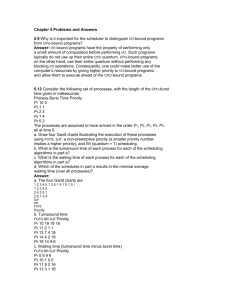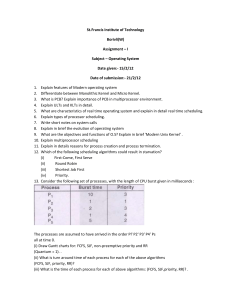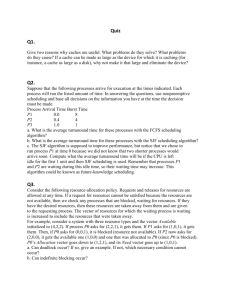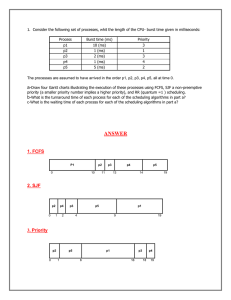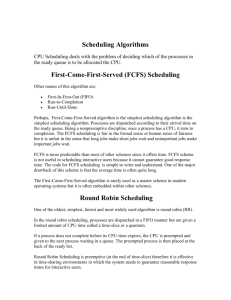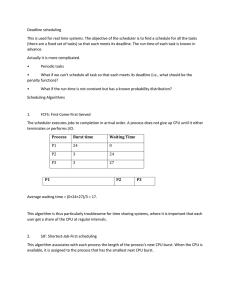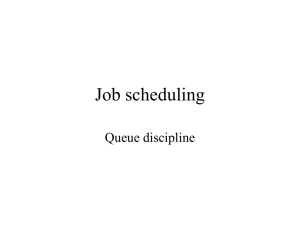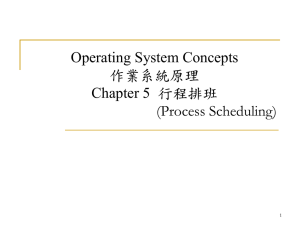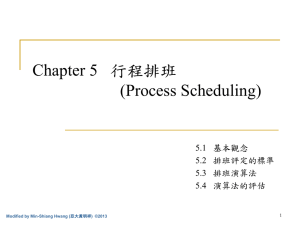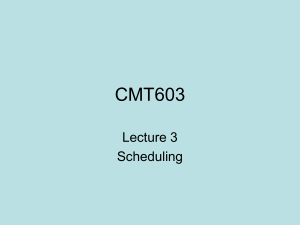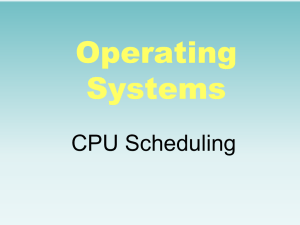CAS3SH3 Midterm Review
advertisement
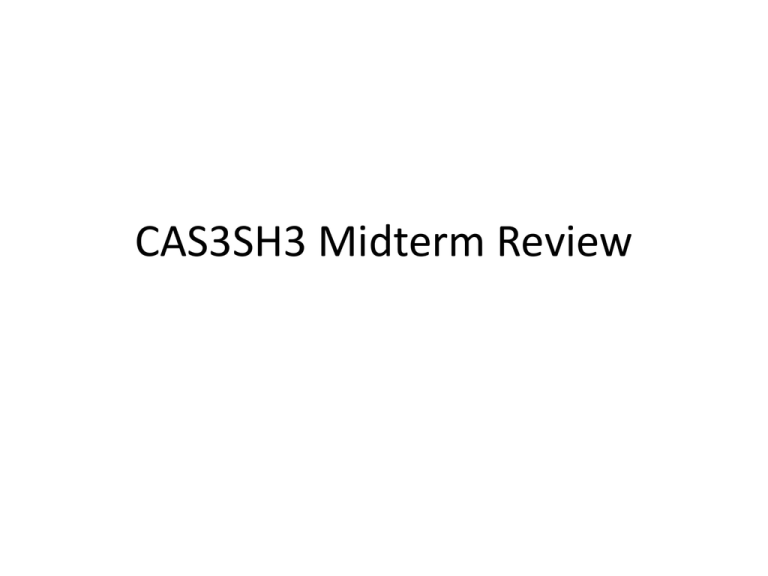
CAS3SH3 Midterm Review The midterm • • • • • 50 min, Friday, Feb 27th Materials through CPU scheduling closed book, closed note Types of questions: True & False, short questions You can bring McMaster standard calculator; no Internet-enabled devices • All-in-one slides on course page • Office hrs on 24th will be from 3:30 – 4:30, 5:30 – 6:30pm Materials covered so far • Introduction to OS – Basic functions of OS: process management, memory management, CPU scheduling, storage management, protection and security – Types of kernels (Monolithic (micro-kernel), modular kernel) and their advantaged and disadvantages; examples of OS supporting each types of kernels – Types of interrupts, purpose of interrupts [process management, synchronization, CPU scheduling] Process management • Understand the difference between process and program – Processes are programs in action • Characteristics of process address space [memory management] – When allocated? what is stored? • Process states – Understand each state and transition conditions [synchronization, CPU, scheduling, memory management] Running Get CPU Interrupt Admit process New Ready Exit Terminated System request Waiting Completion Activate Deactivate Suspended Ready Completion Deactivate Suspended Waiting Process management • Process control block (PCB) – What is stored in PCB? • Context switch – What happens during context switch? • Process creation – Understand fork(), exec() in Unix/Linux (why fork is expensive?) • Process termination – What resources are released/destroyed at process termination – Child & parent processes Process management • Cooperating processes – Mechanisms for cooperation: shared memory and message passing – Types of message passing: blocking vs non-blocking; symmetric vs asymmetric, direct vs indirect • Thread – – – – – Difference between threads and processes Advantages and disadvantage of threads Thread control block Thread life cycle Kernel and user thread; mapping Synchronization • What is race condition? what causes race condition? deadlock? starvation? • Definition of critical section • Requirement for synchronization: mutual exclusion, progress, no starvation, no (short) busy wait How to realize synchronization Produce-consumer as a canonical example • Use enabling and disable interrupt – Understand two implementations (how to avoid busy wait) • Use test&set – Understand two implementations • Use mutex lock (why isn’t it good?) • Use semaphore, P(), V() – Two different uses of semaphores (mutual exclusion & scheduling constraints) • Use monitor, conditional variables – Mesa style vs hoare style (why “while” not “if”) Programs Shared Programs Higher-level API Locks Semaphores Monitors Send/Receive Hardware Load/Store Disable Ints Test&Set Comp&Swap How to realize synchronization Expectations: • understand priority inversion, dead lock in dining philosophers problem, race condition in producer & consumer • given a piece of code, can reason about whether it contains race condition, deadlock, starvation, busy wait • Use the primitives to enable synchronization CPU scheduling • Non-preemptive scheduling: FCFS, SJF • Preemptive scheduling: RR, priority scheduling, multilevel feedback queues, RM, EDF • Understand the effects of quantum size in RR Expectations: • Given a scheduling policy and the collection of the processes (tasks), be able to determine the order of execution, and compute the (avg) waiting time, (avg) completion time, utilization of the processor Utilization (throughput) Response time Fairness FCFS 100% High Good SJF 100% Shortest Poor RR 100% Medium Good Priority 100% - Poor Multi-level priority with feedback 100% Short Good RM ∑Ci/Ti ≤ n (21/n-1) - - EDF 100% - - Exercise on CPU Scheduling • Consider three processes P1, P2, P3 becoming ready at time 0, 9.5, 12 and with a burst time 15, 10, 5 1. Sketch the order of execution of the processes under FCFS, SJF and RR with quantum size 5 2. Compute the average waiting time and completion time of the above scheduling policies. Consider three processes P1, P2, P3 becoming ready at time 0, 9.5, 12 and with a burst time 15, 10, 5 1. Sketch the order of execution of the processes under FCFS, SJF and RR with quantum size 5 2. Compute the average waiting time and completion time of the above scheduling policies. • FCFS P1 0 P2 15 P3 25 30 Consider three processes P1, P2, P3 becoming ready at time 0, 9.5, 12 and with a burst time 15, 10, 5 1. Sketch the order of execution of the processes under FCFS, SJF and RR with quantum size 5 2. Compute the average waiting time and completion time of the above scheduling policies. • SJF P1 0 P3 15 20 P2 30 Consider three processes P1, P2, P3 becoming ready at time 0, 9.5, 12 and with a burst time 15, 10, 5 1. Sketch the order of execution of the processes under FCFS, SJF and RR with quantum size 5 2. Compute the average waiting time and completion time of the above scheduling policies. • RR with quantum size 5 P1 P1 P2 P1 P3 P2 0 5 10 15 20 25 30
